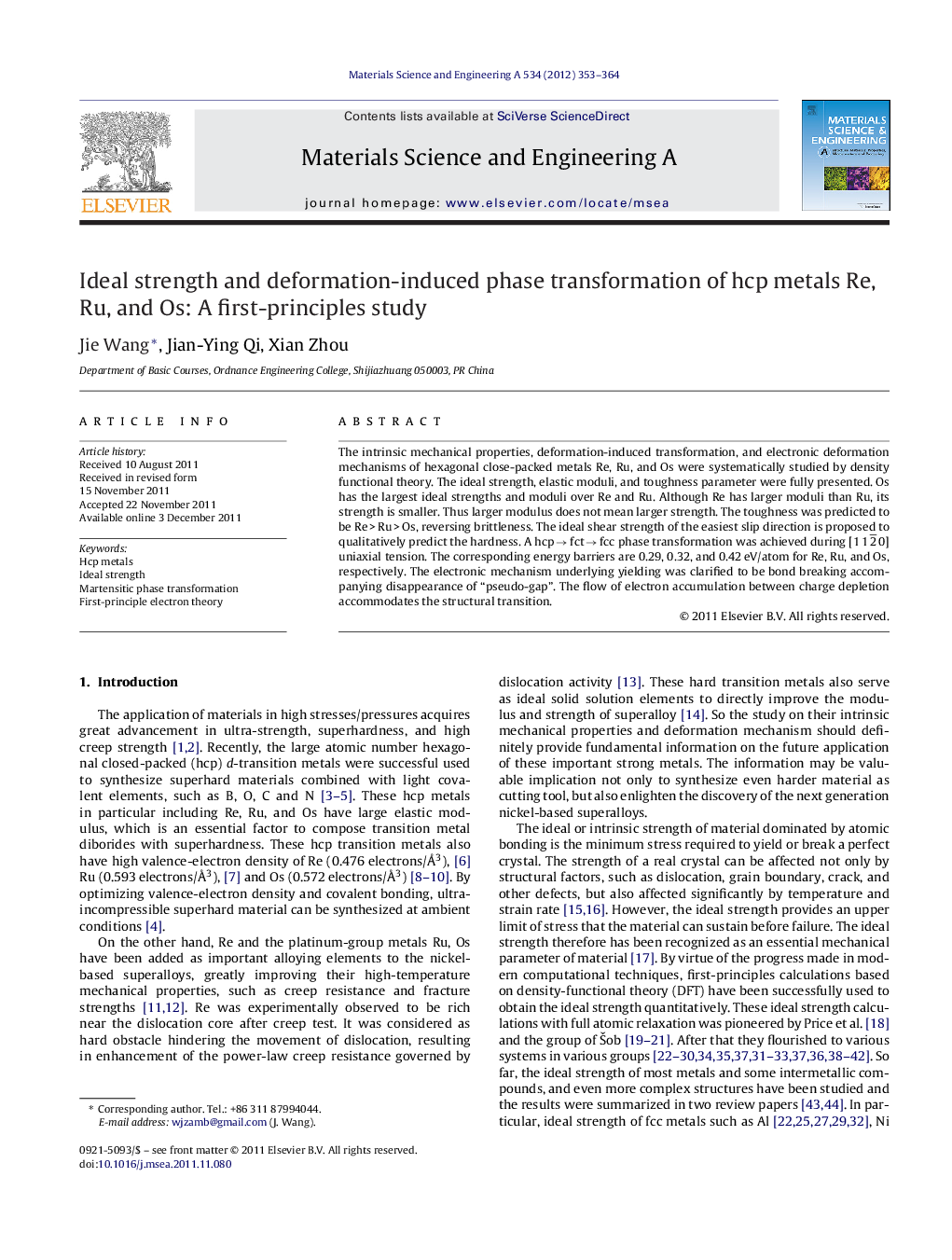| Article ID | Journal | Published Year | Pages | File Type |
|---|---|---|---|---|
| 1577583 | Materials Science and Engineering: A | 2012 | 12 Pages |
The intrinsic mechanical properties, deformation-induced transformation, and electronic deformation mechanisms of hexagonal close-packed metals Re, Ru, and Os were systematically studied by density functional theory. The ideal strength, elastic moduli, and toughness parameter were fully presented. Os has the largest ideal strengths and moduli over Re and Ru. Although Re has larger moduli than Ru, its strength is smaller. Thus larger modulus does not mean larger strength. The toughness was predicted to be Re > Ru > Os, reversing brittleness. The ideal shear strength of the easiest slip direction is proposed to qualitatively predict the hardness. A hcp → fct → fcc phase transformation was achieved during [112¯0] uniaxial tension. The corresponding energy barriers are 0.29, 0.32, and 0.42 eV/atom for Re, Ru, and Os, respectively. The electronic mechanism underlying yielding was clarified to be bond breaking accompanying disappearance of “pseudo-gap”. The flow of electron accumulation between charge depletion accommodates the structural transition.
► Ideal strengths of hcp metals Re, Ru, and Os were reported for the first time. ► An hcp → fct → fcc phase transformation was found generally by [112¯0] tension. ► The ideal shear strength is shown to be a good predictor of hardness. ► Variation in electronic structure accommodates yielding at the critical strain.
